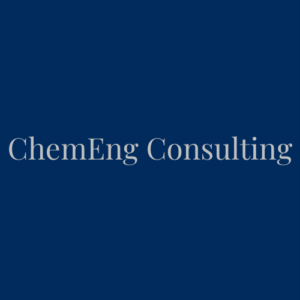The Global Surge in Lithium-Ion Battery Chemicals: Market Analysis and Projections
The global lithium-ion battery chemicals market is experiencing unprecedented growth, driven by multiple converging factors across the energy transition landscape. This analysis examines the primary catalysts behind this surge, current market dynamics, and projections that will shape strategic decision-making for industry stakeholders.
Electric Vehicle Revolution: Primary Growth Engine
The electrification of transportation represents the single most significant driver behind lithium-ion battery chemical demand. According to recent market analysis, the global electric vehicle (EV) market is projected to grow at a compound annual growth rate (CAGR) of 21.7% between 2024 and 2030. This expansion translates directly to battery chemical requirements:
- Lithium Carbonate and Hydroxide: Annual demand projected to reach 3.8 million metric tons by 2030, representing a 500% increase from 2023 levels.
- Cobalt Sulfate: Demand expected to reach 222,000 tonnes by 2028, despite ongoing efforts to reduce cobalt content in battery formulations.
- Nickel Sulfate: Annual consumption forecast to exceed 1.5 million tonnes by 2030, driven by high-nickel cathode adoption.
Major automotive manufacturers have announced combined investments exceeding $515 billion through 2030 to expand EV production capacity. Each gigawatt-hour of battery production capacity requires approximately 800-1,000 tonnes of lithium carbonate equivalent, creating sustained chemical demand growth.
Energy Storage Systems: The Secondary Growth Pillar
While electric vehicles dominate the demand narrative, stationary energy storage systems (ESS) represent a rapidly expanding market segment for battery chemicals. The integration of intermittent renewable energy sources into power grids necessitates large-scale storage solutions:
The global grid-scale battery storage capacity is projected to increase from 27 GWh in 2023 to over 411 GWh by 2030. This 15-fold increase will predominantly utilize lithium iron phosphate (LFP) chemistry, driving substantial demand for:
- Lithium carbonate
- Iron phosphate
- Graphite
- Electrolyte components (lithium hexafluorophosphate, ethylene carbonate, etc.)
Utility-scale deployments in North America, Europe, and Asia-Pacific will accelerate as renewable penetration increases, with regulatory frameworks increasingly mandating storage capacity alongside new solar and wind installations.
Supply Chain Vulnerabilities and Challenges
The surging demand trajectory faces significant supply-side constraints that are creating market tensions and price volatility:
Geographical Concentration Risk
Current production capacity remains highly concentrated geographically:
- Lithium: Australia, Chile, and Argentina account for over 90% of global production.
- Cobalt: The Democratic Republic of Congo supplies 70% of global output.
- Graphite: China processes over 85% of battery-grade material.
- Cathode and Anode Materials: Asian manufacturers control 92% of production capacity.
This concentration creates geopolitical vulnerabilities and supply security concerns, particularly as nations implement strategic battery supply chain policies.
Processing Capacity Constraints
The conversion of raw materials into battery-grade chemicals represents a significant bottleneck. Current global lithium hydroxide conversion capacity stands at approximately 865,000 tonnes per annum, with utilization rates averaging 67%. Industry projections indicate a processing capacity gap of 30-40% by 2028 without significant investment acceleration.
Capital expenditure required to bridge this gap is estimated at $37-45 billion through 2030, with project development timelines averaging 4-7 years from announcement to commissioning.
Market Projections and Investment Implications
Based on current demand trajectories and supply expansion plans, several key projections can be made:
Market Valuation Growth
The global lithium-ion battery chemicals market, valued at $57.4 billion in 2023, is projected to reach $187.9 billion by 2030, representing a CAGR of 18.4%. This growth encompasses cathode materials, anode materials, electrolyte components, and separator materials.
Price Dynamics
After significant volatility during 2021-2023, chemical prices are expected to stabilize at elevated levels through the mid-term projection period:
- Lithium Carbonate: $28,000-35,000 per tonne through 2026, moderating to $22,000-26,000 by 2030 as new production comes online.
- Cobalt Sulfate: $12,000-16,000 per tonne equivalent through 2028, with price sensitivity to DRC production stability.
- Nickel Sulfate: $4,800-6,500 per tonne through mid-decade, with increased volatility tied to Class 1 nickel availability.
Technological Impact on Chemical Demand
Evolving battery chemistries will reshape specific chemical demand profiles:
- The increased adoption of LFP chemistry (projected to reach 40% market share by 2030) will moderate cobalt and nickel demand growth.
- Commercialization of silicon-carbon composite anodes will impact graphite demand trajectories in the latter half of the decade.
- Solid-state battery introduction (projected for commercial scale after 2028) will create demand for new electrolyte materials and modified cathode formulations.
Strategic Implications for Industry Stakeholders
For chemical suppliers, battery manufacturers, and downstream users, several strategic imperatives emerge:
- Vertical Integration: Battery manufacturers and OEMs are increasingly securing upstream chemical supply through direct investment and long-term offtake agreements.
- Geographical Diversification: Development of production capacity in North America and Europe to mitigate concentration risk, supported by policy initiatives like the U.S. Inflation Reduction Act and EU Critical Raw Materials Act.
- Recycling Infrastructure: Accelerated development of commercial-scale recycling capabilities, with projections indicating recycled materials could supply 12-16% of battery material needs by 2030.
- Chemistry Innovation: Continued R&D investment in materials that reduce critical mineral intensity while maintaining or improving performance characteristics.
Conclusion: A Transformed Chemical Supply Landscape
The lithium-ion battery chemicals market is undergoing structural transformation driven by electrification imperatives across multiple sectors. While supply-demand imbalances create near-term challenges, they simultaneously present strategic opportunities for chemical producers, processors, and technology developers.
As the market matures, vertical integration, geographical diversification, and circular economy principles will reshape the competitive landscape. Companies that secure sustainable access to battery chemicals through innovation, strategic partnerships, and early positioning in emerging production regions will establish lasting competitive advantages in this high-growth market.
